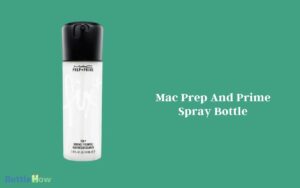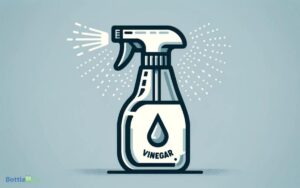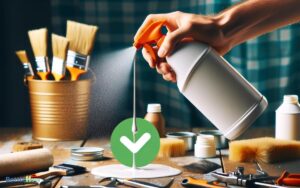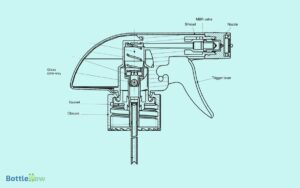What Is the Spray Part of a Perfume Bottle Called? Atomizaer
The spray part of a perfume bottle is called the atomizer. It transforms liquid fragrance into a fine mist, ensuring a consistent and controlled scent distribution.
The atomizer comprises a small pump, a dip tube, and a fine nozzle, all working seamlessly to deliver a sophisticated user experience.
Originating from ancient Greek and Roman devices, the modern atomizer evolved in the late 19th century, revolutionizing perfume application.
Different types include pump, travel, vintage bulb, and pressurized atomizers, each with unique benefits.
With proper maintenance, your atomizer can provide an excellent fragrance experience, and there’s more to discover about its impact and future trends.
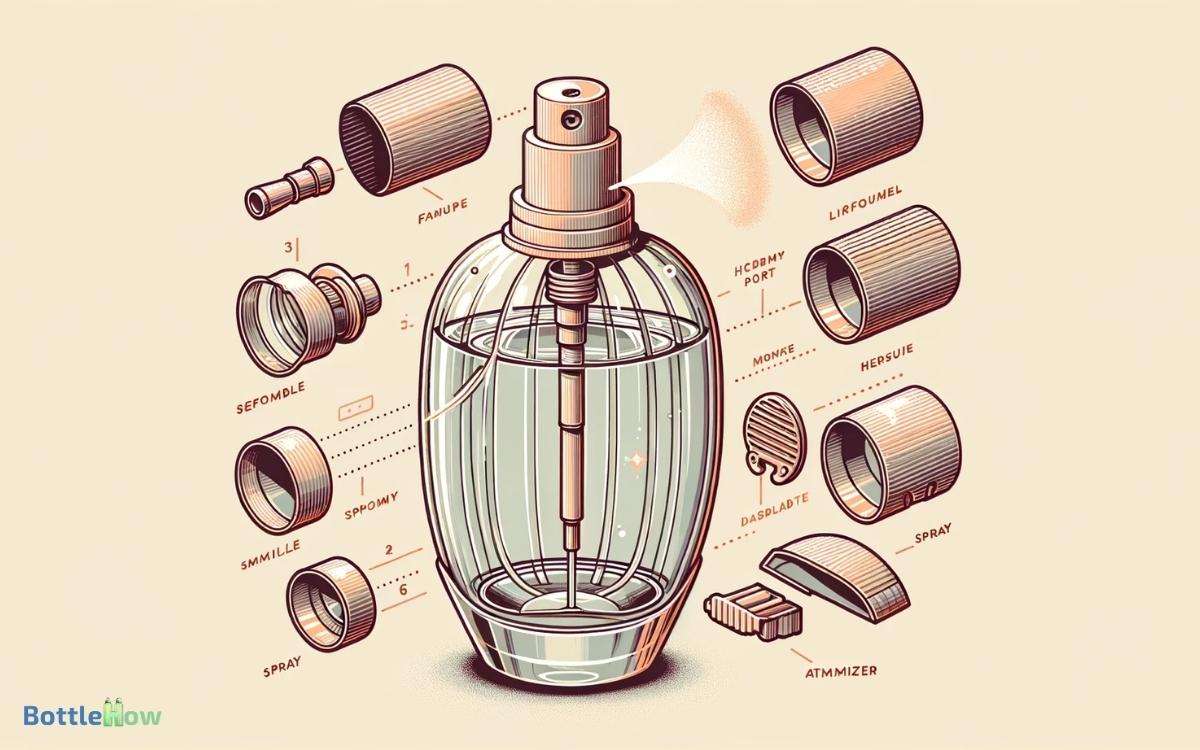
Key Takeaways
The Atomizer Defined
The atomizer, an essential component of a perfume bottle, transforms liquid fragrance into a fine mist for an even and elegant application.
You’ll appreciate how it guarantees a consistent and controlled dispersion of the scent, enhancing the overall experience for the user.
This mechanism utilizes a small pump that, when pressed, forces the liquid through a fine nozzle. The result is a delicate spray that maximizes the fragrance’s reach and efficiency.
By using an atomizer, you can offer clients a luxurious and precise way to enjoy their favorite perfumes.
The atomizer’s design not only preserves the integrity of the fragrance but also adds a touch of sophistication to the perfume bottle, making it a pivotal element in high-quality perfumery.
Historical Background
Dating back to ancient civilizations, the concept of dispersing fragrances has evolved greatly over the centuries.
Early Egyptians utilized rudimentary methods, such as soaking aromatic woods in water, to release scents. Greeks and Romans advanced this by creating rudimentary, handheld devices for spraying perfumes.
Throughout the Middle Ages, perfumery techniques spread across Europe, leading to the development of more sophisticated applicators.
In the late 19th century, the modern perfume atomizer was invented, transforming how fragrances were applied. This innovation allowed for the even distribution of scents, enhancing the user experience.
Key Components
Understanding the key components of a perfume bottle’s spray mechanism often reveals the intricate engineering behind its seamless operation. This mechanism typically consists of a pump, a tube, and a nozzle, all working together to create a fine mist with each press. The precision in design ensures a consistent spray, enhancing the user’s experience while minimizing waste. Interestingly, questions like what’s in Planet Fitness spray highlight the curiosity around spray mechanisms, especially regarding the ingredients and functionality of different mist dispensers.
This knowledge lets you appreciate the precision and care that go into creating a luxurious experience for those you serve.
A typical perfume bottle’s spray mechanism consists of several critical parts:
- Nozzle: Secures a fine mist, enhancing the fragrance distribution.
- Pump: Regulates the flow of perfume, guaranteeing each spray is consistent.
- Dip Tube: Draws the liquid from the bottom, ensuring every drop is used.
- Actuator: The part you press to release the fragrance, designed for ease and comfort.
How It Works
Each time you press the actuator, a well-coordinated sequence of events within the spray mechanism guarantees a perfect mist of fragrance is released.
When you apply pressure, it activates a spring-loaded piston inside the pump. This piston compresses the liquid perfume, forcing it through a narrow valve.
As the liquid exits, it encounters a fine mesh or nozzle designed to break it into tiny droplets, creating a mist. This misting process secures a uniform and controlled distribution of the fragrance.
The components work seamlessly to avoid clogs and deliver consistent performance. Understanding this process helps you appreciate the engineering behind a simple spray, enhancing your ability to serve clients with expertise and confidence.
Types of Atomizers
Over the years, atomizers have evolved into various types, each offering unique advantages and functionalities for delivering a fine mist of fragrance. Understanding these can help you better serve your customers’ needs.
Consider the following types:
- Pump Atomizers: These are the most common, providing a consistent spray with each press. Ideal for everyday use.
- Travel Atomizers: Designed for on-the-go convenience, they’re compact and refillable, making them perfect for frequent travelers.
- Vintage Bulb Atomizers: These offer a touch of elegance and nostalgia, using a squeezable bulb to release the fragrance.
- Pressurized Atomizers: Utilized in some high-end perfumes, they use compressed air for a finer, more even mist.
Each type caters to different preferences and occasions, ensuring you can meet every client’s unique desires.
Material Considerations
When choosing a perfume bottle, the materials used in the spray mechanism significantly impact both the functionality and the overall sensory experience of the product.
You should consider durability, resistance to corrosion, and compatibility with the perfume’s ingredients.
Common materials include plastic, metal, and glass. Each has its own advantages and drawbacks, influencing the longevity and performance of the spray.
| Material | Characteristics |
|---|---|
| Plastic | Lightweight, cost-effective, may degrade over time |
| Metal | Durable, corrosion-resistant, adds a premium feel |
| Glass | Inert, non-reactive, heavier, fragile |
| Aluminum | Lightweight, resistant to corrosion |
| Stainless Steel | Highly durable, resistant to corrosion, premium aesthetic |
Selecting the right material guarantees a consistent and pleasant user experience, enhancing the overall appeal of the perfume.
Design Innovations
Embracing modern technology, design innovations in perfume bottle sprays are revolutionizing the way you experience fragrance.
These advancements not only enhance your daily routine but also elevate your service to others with precision and elegance.
Here are four key innovations:
- Micro-Mist Technology: Provides a fine, even distribution, allowing you to offer a luxurious, long-lasting scent experience.
- Ergonomic Designs: Guarantees comfort and ease of use, making it simpler to apply fragrance gracefully.
- Refillable Systems: Promotes sustainability, letting you demonstrate a commitment to eco-friendly practices.
- Adjustable Sprayers: Enables you to customize the intensity, tailoring the scent to individual preferences.
These innovations enrich your ability to deliver an exceptional fragrance experience, reflecting your dedication to excellence.
Common Issues
When your perfume bottle’s sprayer malfunctions, it can be frustrating and inconvenient. Common issues include the sprayer not dispensing any liquid or producing an uneven mist, often due to clogged nozzles.
Understanding the causes of these problems and knowing how to effectively clean and maintain the nozzle can keep your sprayer functioning smoothly.
Sprayer Malfunction Causes
A common issue with perfume bottle sprayers is clogging, often caused by residue buildup in the nozzle.
When this happens, it can be frustrating, especially if you’re preparing for an important event or simply want to enjoy your favorite fragrance.
Here are some common causes of sprayer malfunction that you should be aware of:
- Residue Buildup: Over time, perfume particles can accumulate and block the nozzle.
- Air Blockage: Air trapped in the tube can prevent the spray mechanism from working properly.
- Broken Pump: A damaged pump mechanism can render the sprayer inoperable.
- Loose Fittings: Components that aren’t tightly secured can lead to leaks or ineffective spraying.
Understanding these issues helps you better serve others by ensuring their fragrance experience remains enjoyable.
Clogged Nozzle Solutions
To tackle a clogged nozzle, begin by soaking the spray head in warm water to dissolve any residue. This simple step often clears minor blockages.
If that doesn’t work, use a fine needle or a toothpick to gently dislodge any debris stuck in the nozzle. Be cautious not to damage the nozzle while doing this.
Another effective method is to rinse the nozzle with rubbing alcohol, which can break down more stubborn buildup.
Should the issue persist, consider replacing the spray head entirely. Guaranteeing the nozzle is clean helps maintain the perfume’s quality and ensures a consistent spray, enhancing the user’s experience.
Maintenance Tips
Regularly cleaning the spray nozzle guarantees that your perfume bottle delivers a consistent and fine mist.
To keep your perfume in top-notch condition, follow these maintenance tips:
- Wipe the nozzle regularly: Use a soft, damp cloth to gently remove any residue that may accumulate, ensuring a smooth spray.
- Store in a cool, dry place: Keep your bottle away from direct sunlight and humidity to preserve the fragrance and prevent clogging.
- Use distilled water: Occasionally, spray a small amount of distilled water through the nozzle to clear any blockages.
- Secure the cap: Always replace the cap after use to prevent dust and debris from entering the nozzle.
Environmental Impact
Understanding the environmental impact of perfume bottles begins with examining the materials and production processes involved.
Perfume bottles often consist of glass, plastic, and metal components, each requiring significant energy and resources to manufacture.
The spray mechanism, typically made of plastic and metal, poses challenges for recycling due to its mixed materials. Additionally, the production process can release harmful chemicals into the environment.
As someone who endeavors to serve others, you can make a difference by choosing perfumes from brands committed to sustainable practices.
Look for refillable bottles, eco-friendly packaging, and companies that minimize their carbon footprint.
By making informed choices, you’ll contribute to reducing waste and promoting a healthier planet for future generations.
Future Trends
As we consider the environmental ramifications of perfume production, it’s equally important to explore the emerging trends shaping the future of this industry.
You’re likely to see a shift towards more sustainable and innovative practices. Here are four trends to watch:
- Eco-friendly materials: Brands are adopting biodegradable and recyclable components for spray mechanisms.
- Refillable bottles: Companies are promoting reusable containers to reduce waste.
- Natural ingredients: There’s a growing demand for organic, non-toxic substances in fragrances.
- Smart technology: Perfume dispensers with customizable settings are gaining popularity, offering a personalized experience.
Conclusion
Caring for your perfume bottle’s atomizer is essential, much like tending to a well-loved garden. By understanding its history, components, and functionality, you can guarantee it works flawlessly.
Regular maintenance can help prevent common issues and extend its lifespan, making every spritz a delight.
As we become more eco-conscious, look for future trends that blend sustainability with luxury. Stay informed and your perfume experience will always be as fresh as a morning bloom.

